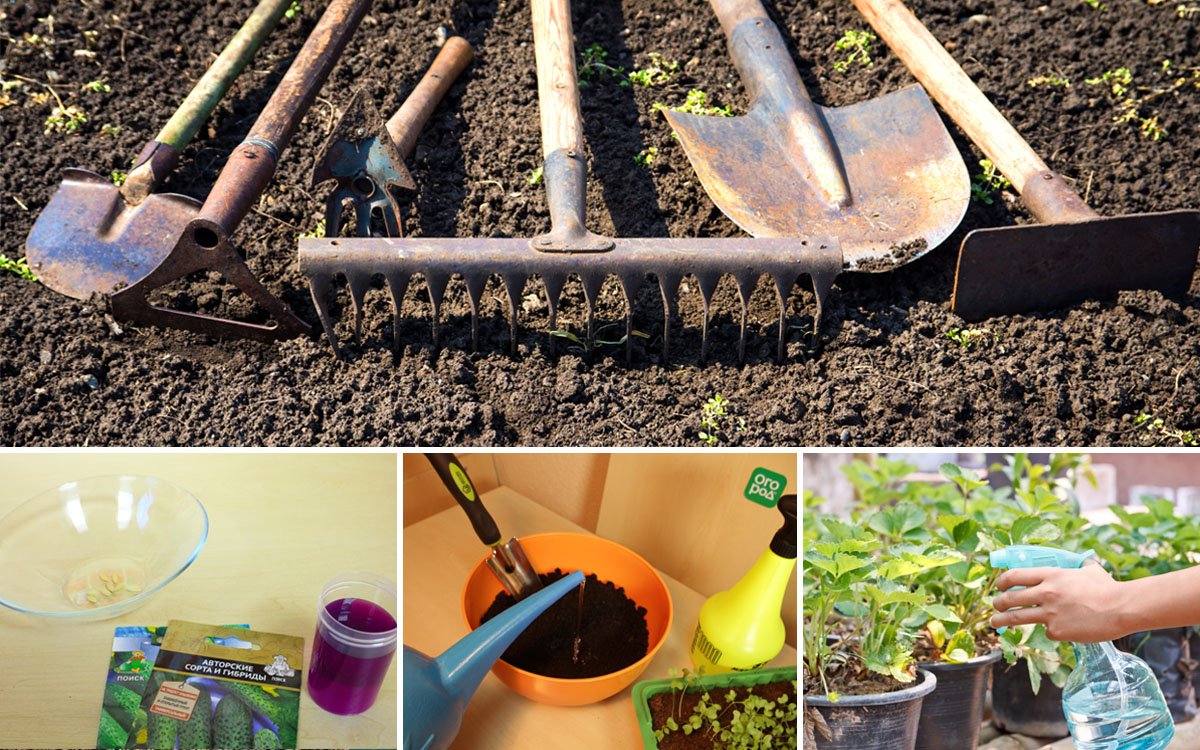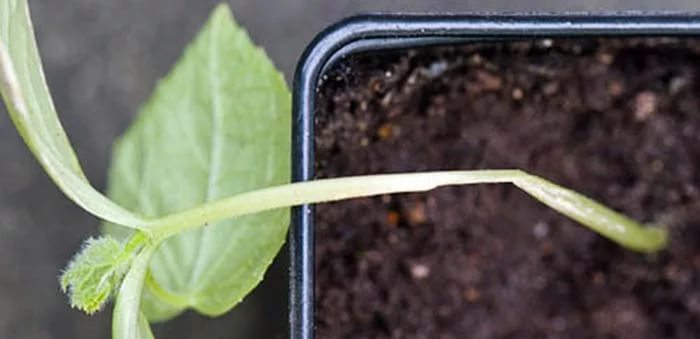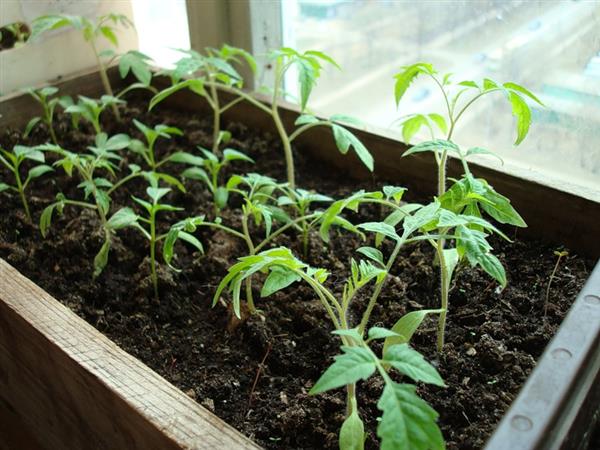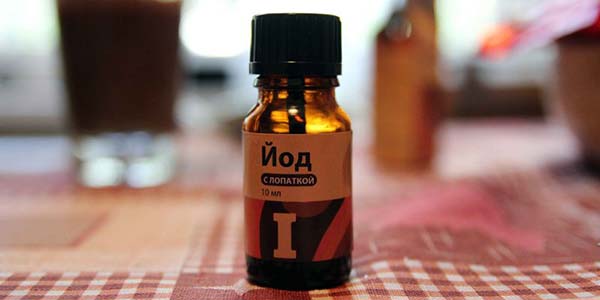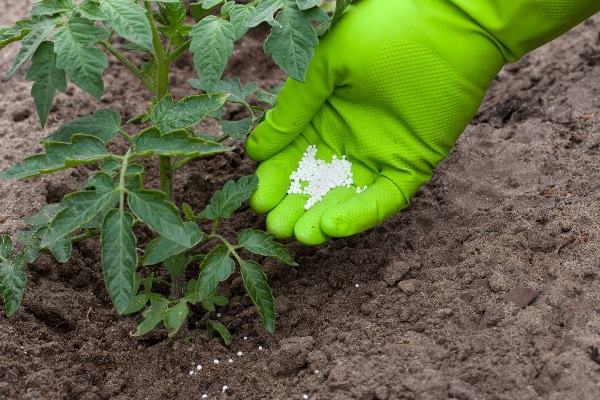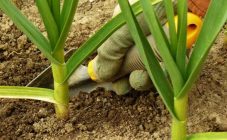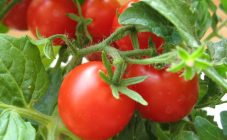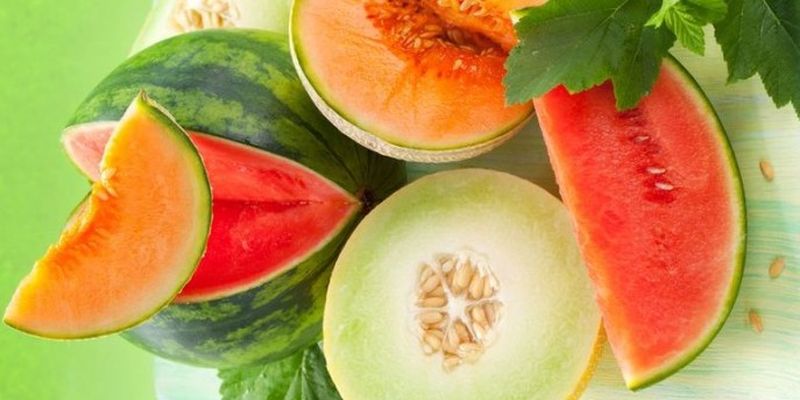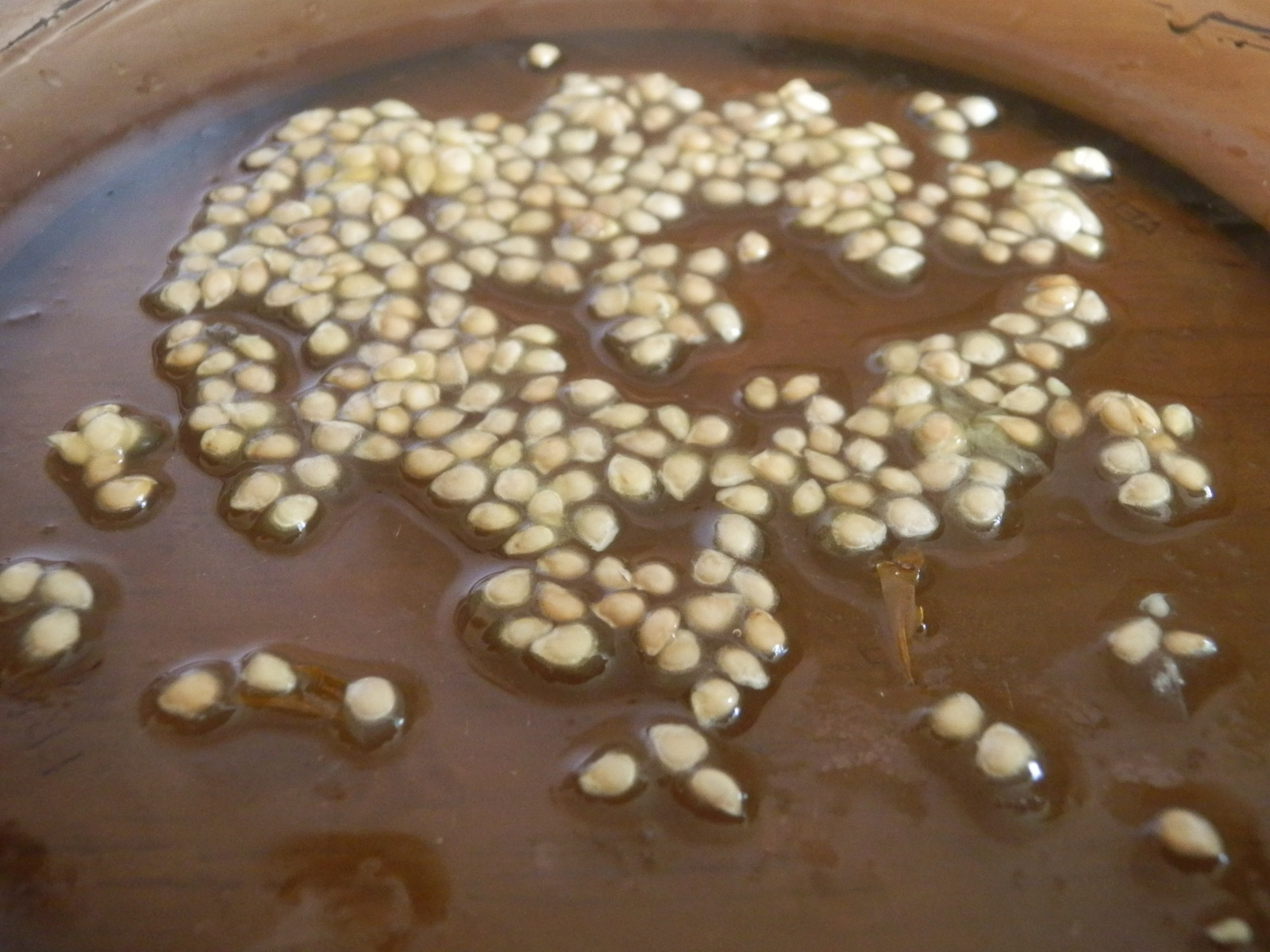Content:
Tomatoes, whose homeland is America, from the point of view of botanists, belong to berry crops. Agronomists consider them a vegetable because of the way they are cultivated. This annual plant is quite whimsical. To increase the chances of a good harvest, you should learn agricultural techniques and prepare strong seedlings. And for this it is worth figuring out how to feed tomato seedlings so that they are plump, with strong stems and a developed root system.
Seed preparation
To get berries pleasant in appearance and taste, the gardener must take care of preparing the seeds for seedlings. It is recommended to treat them with a weak solution of potassium permanganate. Seeds are first checked for germination: diluted in a glass of warm water 1 tsp. salt, pour the entire available tomato seed fund into the vessel. Stir gently for 2-3 minutes and then leave alone for 10-15 minutes.
Due to the fact that more nutrients are contained in heavy and large specimens, they will accumulate at the bottom of the glass. Healthy and strong bushes will grow from them. Such seeds must be collected, rinsed in running water, and laid out to dry on napkins. They are suitable for germination. All floating seeds are not suitable for sowing.
Selected specimens are immersed in a weak solution of potassium permanganate for 1-2 hours. This is necessary to strengthen the immune system. When treating the seeds of some tomato hybrids, ammonia or hydrogen peroxide is used instead of potassium permanganate.
After planting the seeds, you must wait for their germination. You need to water the seedlings with warm water every morning, using a sprayer or syringe. The ground should be barely damp.
After the emergence of seedlings, the irrigation regime is changed: before picking, the sprouts are watered once every 5 days, and after picking works (when the plants develop 1-2 leaves), watering is applied only when the soil dries up in a container with seedlings. In 14-15 days after these procedures, feeding of tomato seedlings begins. You will have to add the necessary substances to the soil 1 time in 6-7 days.
How to feed tomato seedlings
For this, the achievements of modern chemistry or folk methods are used. You can use both options, the main thing is not to overdo it with fertilizers.
The most commonly used fertilizers are potassium nitrate and superphosphate. The nitrogen component helps to strengthen the stem of the seedling, build up the green mass of the sprout. Phosphate fertilizer is needed to strengthen the plant's ability to form ovaries.
It is better for beginner gardeners to learn from experts than to feed tomatoes so that they are plump.
The following methods are used to obtain the desired thickness of the fruits when grown in a greenhouse:
- Top dressing with urea (0.5 g), superphosphate (1 tsp, but not complete), potassium salts (1/3 tsp). All components are mixed in a vessel where 1 liter of water is poured. Then the seedlings are watered with the mixture.
- ½ g of ammonium nitrate, 1 tsp. superphosphate, potassium sulfate (1/3 tsp) are mixed in 1000 ml. water.The sprouts are watered with this solution once a week.
To exclude the possibility of death of seedlings from an overdose of chemicals, it is recommended to feed the tomatoes with the following compositions:
- In order for the seedlings to grow evenly, it must be fertilized with 1 tbsp. l. wood ash, which is infused in 2 liters of boiled water, is filtered, and then used for its intended purpose.
- How to water tomato seedlings to grow better? Eggshells showed good results. It is filled with 2/3 of the volume of a three-liter jar, and then filled with warm water. Infusion lasts 3 days. Then they take part of the infusion, dilute with 3 parts of liquid, water the seedlings. On the same shell, the tincture is made 2-3 times.
- A banana leaf and peel are suitable for feeding. The infusion is made according to the recipe specified in paragraph 2, maintaining the proportions, but replacing the shell with the components of the banana.
- The yeast used in cooking to make sourdough and dough is one of the best garden fertilizers. They create almost ideal growing conditions for tomatoes.
Several recipes for this product can be used. For example, 0.1 kg. live yeast structures are mixed with 125 g of sugar in 2500 ml of warm water. The mixture is covered with gauze, left for 24 hours in a warm room. This is necessary to start the fermentation process. The whole mass is mixed every 3-4 hours. In order to fertilize the planting of tomatoes, the leaven is diluted in a proportion of 1 tbsp. mixture for 1 bucket of water.
There is another recipe that works well. In 10 liters. 10 g of dry yeast are dissolved in warm water. Stir the mass, and then pour over the tomatoes. Green seedlings are treated with a “cocktail” of 10 g of dry yeast, 0.5 l. bird droppings, 500 g of wood ash, 5 tbsp. l. granulated sugar. After settling the mixture for 24 hours, it is diluted in water for use in a ratio of 1 to 10.
It is recommended to use the yeast method of processing crops no more than 3 times per season, otherwise fungi can destroy the plants. This is the main condition for using the product. If it is violated, yeast will contribute to the development of fungal infection of tomatoes, to eliminate which it will be necessary to use special means.
Manure
An almost free and valuable product that almost every farm has. A rotted mixture or humus is used. They have the highest nitrogen content, so they are suitable for feeding tomatoes.
Chicken manure infusion is used as a fertilizing component. It is mixed in an amount of 1000 g with 10 liters. water. The settling lasts 4 days. The solution must be stirred regularly. The finished product is colored in light brown tones. No more than 1000 ml of the resulting mixture is applied under each bush. It is impossible to use fresh manure for feeding, it contains volatile compounds that are toxic to plants.
Mullein
Cow dung (mullein) is one of the strongest and most necessary fertilizers for tomatoes at any stage of crop growth in open areas. Both pure product and its mixtures with other organic and inorganic substances are introduced into the soil. Mix 1 tbsp. l. potassium sulfate, 10 liters of water and 500 ml. mullein. It is recommended to apply no more than 1 liter under the bush. the resulting mixture. Feeding is carried out with the specified fertilizer no more than 2-3 times during the entire growing season of the variety.
Pure mullein is used only as a foliar feeding, otherwise the seedlings may be damaged, which will sharply slow down the development of the ovary and the growth of fruits. In this case, there will be crop losses (up to 20%).
Iodine
Some farmers use iodine as a top dressing for tomatoes. To do this, you need to buy a bottle at a pharmacy, open the cap, and then drip into 10 liters. water 5-6 drops of medicine, stir, and immediately water the bushes.
The drug helps tomatoes get rid of diseases such as powdery mildew, various rot. The antiseptic effect of iodine destroys microorganisms dangerous for plants.
Another recipe is used for watering seedlings. Add 10 g of medicine, 2 g of potassium, 10 g of phosphorus to a bucket of water (9-10 l.). This mixture is used to process plantings at the rate of 500 ml. for each bush. The iodine solution is also suitable for disinfecting the beds when transferring sprouts to a permanent place. Instead, potassium permanganate (a weak solution) is often used, with which the beds are watered before transplanting plants.
Urea
Urea is used for fertilization for tomatoes only in a mixture with wood ash, phosphates or potassium compounds. The first feeding is done when 2-3 leaves appear on the sprouts. For this in 9-10 liters. water is diluted with 6 g of nitrate (ammonium) and 15 g of urea. The mixture is dissolved in a ratio of 1 to 10 in an aqueous medium, and then the seedlings are watered. After transferring the plants to permanent beds, urea in an amount of 15 g is added to each well under the bushes. This product is recommended to be used no more than 1 time per season. Novice farmers make the mistake of using pure urea to water their seedlings. This cannot be done, otherwise all plantings will perish.
The homemade recipes described are used in conjunction with industrial fertilizers or separately if the farmer wants to get an environmentally friendly product. All the above recipes can be used if peppers are planted instead of tomatoes by farmers.
How to deal with seedling diseases
An excess of any chemical compound and its deficiency are equally harmful to plants. Often, novice farmers have a bias in the development of tomato on the site. For example, bushes develop only green mass, and the yield is small. The plant produces a pale fruit, the size of which is very different from the standard adopted for the hybrid planted by the farmer. To prevent this from happening, the gardener must monitor the appearance of the plantings.
If the leaves are painted in saturated dark tones of green, and the stems with a dense structure have a purple color, then the seedlings are healthy, there will be a good harvest.
When a yellow color appears on the lower leaves of a tomato, the stems of the hybrids begin to stretch upward, become thin. The most common reasons for such changes are the following factors:
- the sprouts were in individual pots for more than the prescribed period;
- tomatoes do not have enough lighting or the amount of light is more than necessary (with artificial lighting);
- insufficient nutrition of plantings with fertilizers.
The gardener must find out what the tomatoes are lacking in order for them to develop normally. After establishing the reasons, it is recommended to correct the situation by using dressings.
When plants feel a lack of nitrogen, their leaves turn yellow and fall from the lower branches. If you do not take action, then the rest of the crown will fall off. To correct the situation, you need to mix 2 g of urea or nitrate with 5 liters of water, and then pour the seedlings with the solution.
When the bushes lack phosphorus, purple streaks appear on the underside of the leaves. To eliminate the problem, it is recommended to treat the sprouts with superphosphate. From 16 to 18 crystals of this substance are dissolved in 5 liters of water, and then the bushes are poured with a mixture.
When hybrids feel a lack of potassium, their leaves wrinkle and curl. If you do not take action, then the fruits will ripen slowly and unevenly. At the first signs of potassium deficiency, 1 tsp. potassium sulfate is dissolved in 5 l. water. The mixture is applied under each bush.
With an excess of light, it is necessary to make up for the iron deficiency in tomato hybrids. For this, a hypotonic solution of sodium chloride (0.2-0.4%) is used. Plantings are sprayed with this composition at night, and additional lighting is turned off for this period, reducing daylight hours.
To increase the yield of the site, feed tomatoes at any stage of development, improve the composition of the soil on the site, breeders recommend using the drug Baikal. When cultivating crops and land at a concentration of 1 to 1000, this product gives an increase in yield from 10 to 30%. Under its influence, the taste of tomatoes improves, the quantity and quality of ovaries on the bushes sharply increases. The drug is also used to eliminate the above diseases of the bushes. To use it in each specific case, you need to read the instructions attached to the package of the product.
